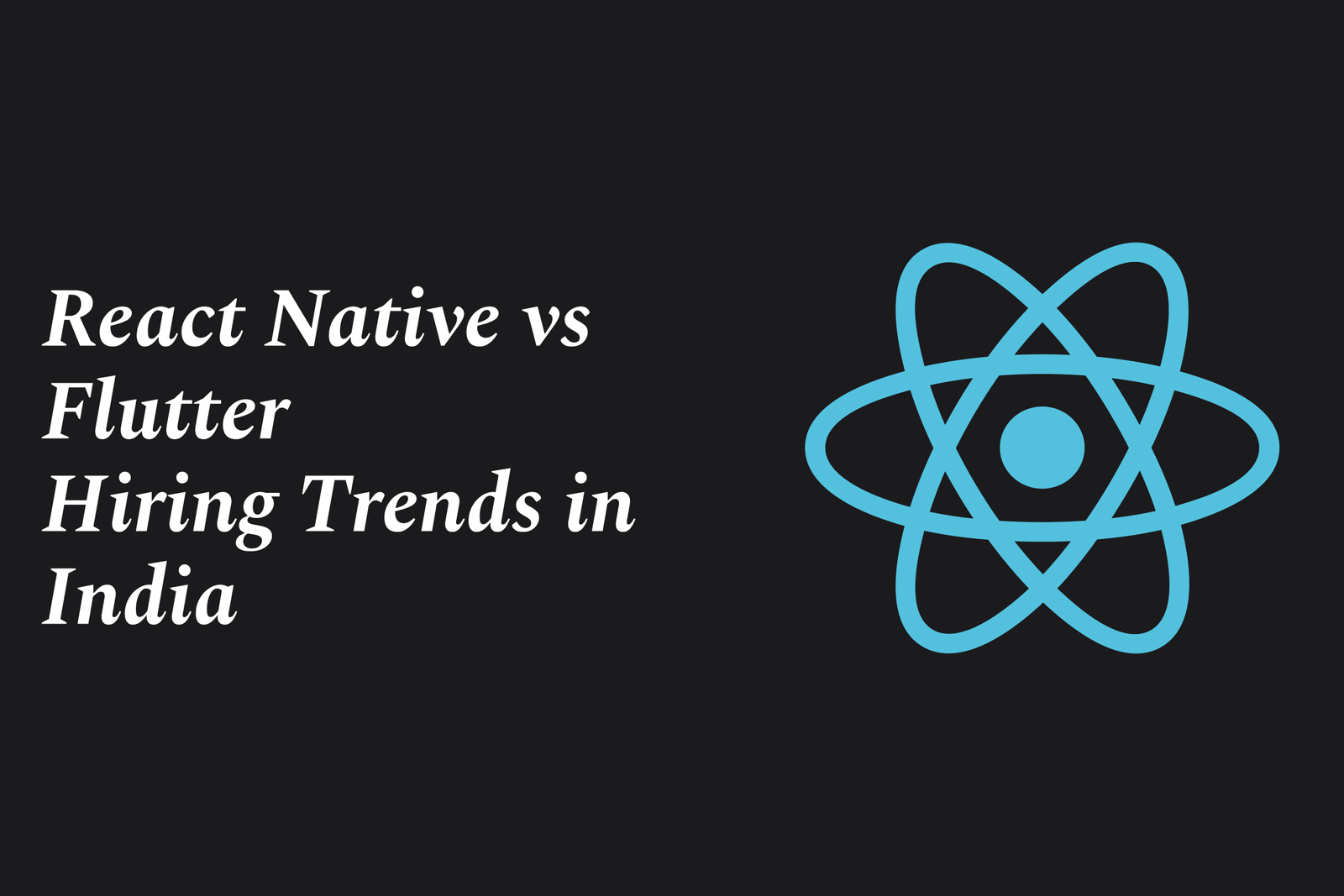React Native vs Flutter: Hiring Trends in India
In India, React Native currently leads in job demand due to its maturity and larger enterprise adoption, while Flutter is rapidly gaining popularity among developers for its modern features and growing ecosystem, signaling a promising rise in future hiring trends.
React Native vs Flutter: Hiring Trends in India
1 ) Introduction to React Native and Flutter
Both React Native and Flutter are popular cross platform mobile development frameworks.
React Native, developed by Facebook, uses JavaScript and allows building apps for iOS and Android with a shared codebase.
Flutter, developed by Google, uses Dart language and enables native compilation for multiple platforms including iOS, Android, and beyond.
2 ) Popularity and Developer Interest
Developer interest in Flutter has surged recently, with Flutter receiving more stars on GitHub compared to React Native.
Surveys such as Stack Overflow’s indicate a higher popularity for Flutter among developers.
Flutter is praised for its ability to compile to native code on more devices compared to React Native.
3 ) Job Market and Hiring Demand in India
Despite Flutter’s rising popularity among developers, React Native currently shows more job vacancies in Indian job portals like Indeed and Glassdoor.
The number of React Native related jobs is reportedly more than twice that of Flutter in the Indian market.
This disparity suggests that while Flutter is a strong growing technology, React Native remains more widely adopted in Indian enterprises and startups hiring developers.
4 ) Reasons Behind the Hiring Trends
React Native has been in the market longer, thus more companies have established React Native based projects requiring experienced hires.
Flutter, while gaining momentum, is newer and its ecosystem is still growing, affecting immediate hiring numbers.
Companies may prefer React Native for its JavaScript ecosystem and established community support.
The demand for Flutter skills is expected to grow as its ecosystem matures and adoption increases.
5 ) Choosing Which Technology to Learn
For job seekers in India, learning React Native currently offers better immediate job opportunities.
For developers interested in future proofing their skills, investing in Flutter could be advantageous considering its growing popularity and capabilities.
Both frameworks have promising futures, and learning either will benefit mobile developers.
6 ) Conclusion
React Native dominates the present Indian job market for cross platform developers.
Flutter is rapidly rising in developer interest and may catch up in job demand with time.
Developers should consider both market trends and personal career goals when choosing between React Native and Flutter.
https://justacademy.in/news-detail/dart-3.2:-what’s-new-for-flutter-devs
https://justacademy.in/news-detail/flutter-vs-ionic-2025-performance
https://justacademy.in/news-detail/speech-recognition-in-flutter-using-ai
https://justacademy.in/news-detail/most-downloaded-react-native-ui-kits-in-2025
https://justacademy.in/news-detail/top-animation-packages-for-flutter
Related Posts
Java supports GDPR and data privacy by enabling secure data handling through encryption, controlled access, and precise data management. It allows developers to minimize PII exposure, ensure data confidentiality, and design workflows that comply with data protection regulations effectively.
Java code quality tools have evolved to include advanced static analysis, integrated security checks, and AI-powered code reviews. These updates help developers detect bugs, enforce coding standards, and enhance security, streamlining the development process and improving overall code reliability.
Java remains a cornerstone in big tech companies, evolving with modern features like records, pattern matching, and virtual threads. Its robust ecosystem, enhanced performance, and growing AI integrations keep it vital for both legacy systems and innovative new projects.
Java and CI/CD pipeline optimizations streamline Java application development by automating builds, tests, and deployments. They improve efficiency through parallelization, caching, and secure secrets management, enabling faster feedback loops and more reliable, scalable software delivery.
Java supports modern cryptography standards through its flexible Java Cryptography Architecture (JCA), enabling integration of advanced algorithms like AES, EdDSA, and post-quantum tools. Libraries like Bouncy Castle offer FIPS-certified, hardware-accelerated implementations for secure development.
Java 23 enhances record patterns by enabling concise, direct destructuring of record components within pattern matching, simplifying type checks and data extraction. This improvement boosts code readability and expressiveness by reducing boilerplate in handling immutable data classes.
Java remains a top choice for mobile app backends, powering scalable, secure, and high-performance server-side solutions. Latest trends include cloud-native microservices, reactive programming, and enhanced JVM optimizations, enabling efficient, flexible, and robust mobile backend development.
Java SE 24 and LTS Java SE 21 offer enhanced features and performance, while Apache Spark 4.0.0 introduces Scala 2.13 support and advanced ML and SQL capabilities. Together, they empower developers to build scalable, high-performance data applications with modern tools.
JUnit 5 modernizes Java testing with a modular architecture, improved assertions, and seamless Java 8+ support. Beyond JUnit, tools like Mockito and AssertJ enhance mocking and assertions, creating a powerful, flexible ecosystem for writing clean, efficient Java unit tests.
Java plays a pivotal role in cloud automation tools by providing a robust, platform-independent language used to build scalable automation frameworks like Jenkins and Selenium, enabling efficient CI/CD pipelines, testing, and orchestration across diverse cloud environments.










